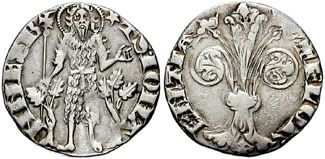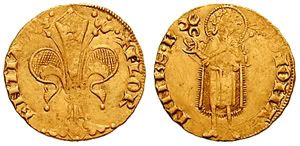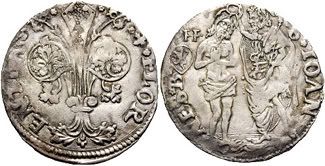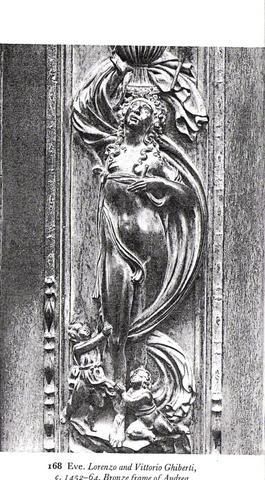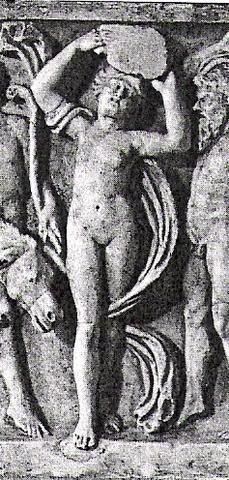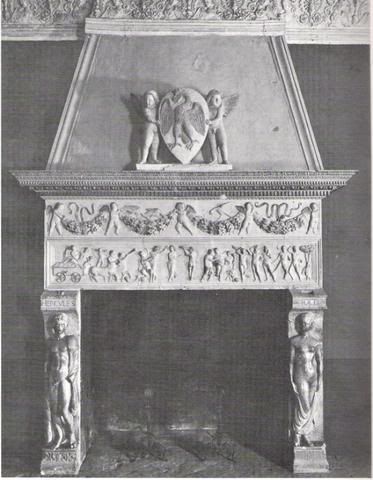The dancing female figure is different, the similarity, as far as it goes, is to the caped male figures.
Italy, Florence. 1306.
AR Fiorino or Popolino (18mm, 1.58 gm).
Di Guidingo, Di Borgo and Di Puccio, mint magistrates.
Lily of Florence. Around: + FLOR ENTIA
John the Baptist standing, oak leaves at sides; star above. Around: * + S IOHANNES
Bernocchi 949; Biaggi 788.
(From at least the 16th century John the Baptist was identified with the astrological sign of Aquarius, the Tarot de Marseille star card may thus share several elements with the above coin, central figure of John Baptist/Aquarius, the Star above and two bushes either side).
Italia, Firenze. Republic. 1189-1532. AV Fiorino (3.51 g). Batturo 1332-1348.
/ Giglio di Firenze
/ San Giovanni Battista, tre mezzelune sopra la manno del santo.
Lily of Florence
St. John the Baptist; three crescent moons in legend.
AR Barile (3.26 gm). Francesco di Francesco di Lotterio Davanzati, moneyer.
+*FLOR-ENTIA*, lily of Florence
S* IOAN-NES*B*, Christ and St. John the Baptist confronted, in baptismal scene; arms and M in legend.
Bernocchi 3539.
